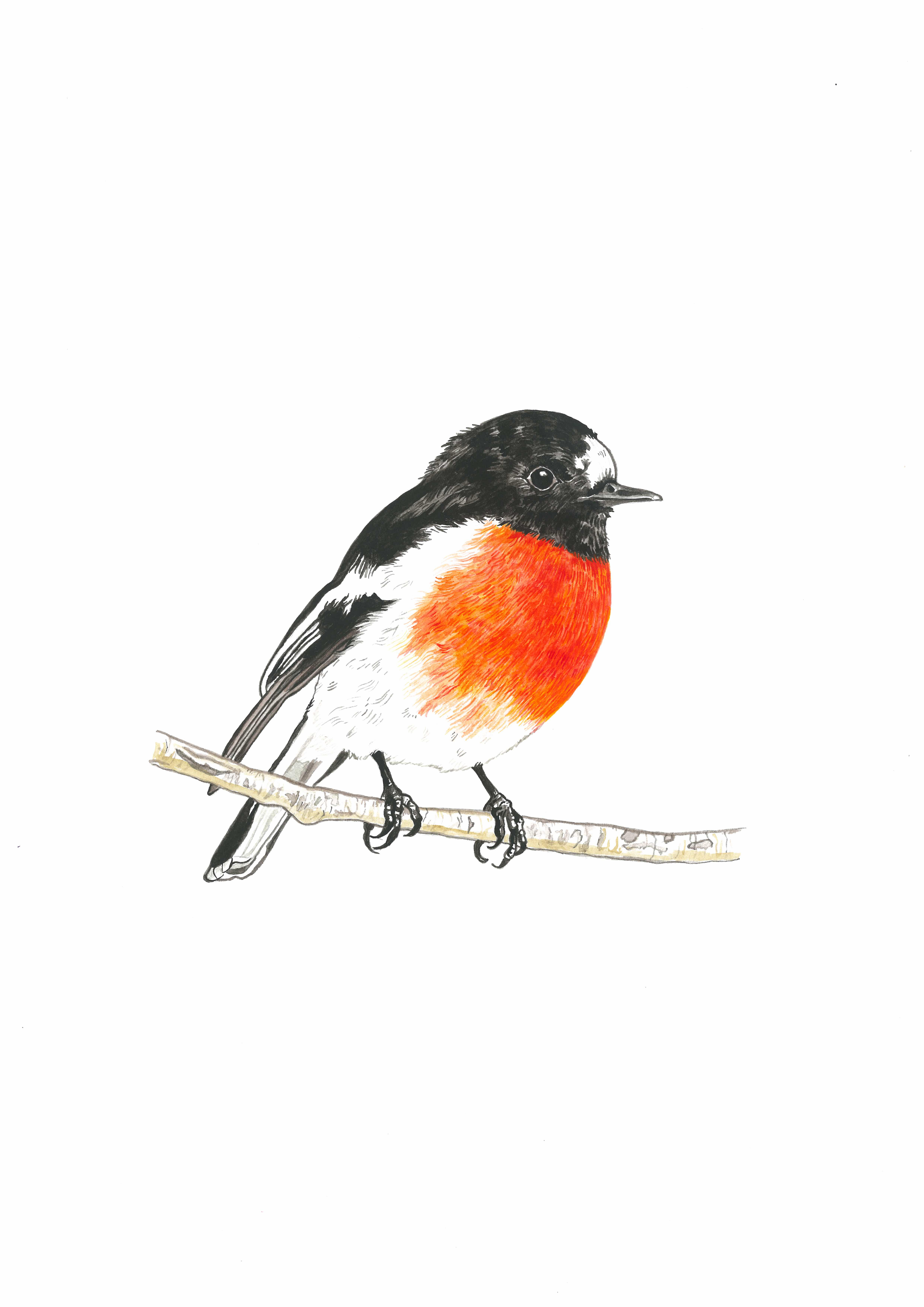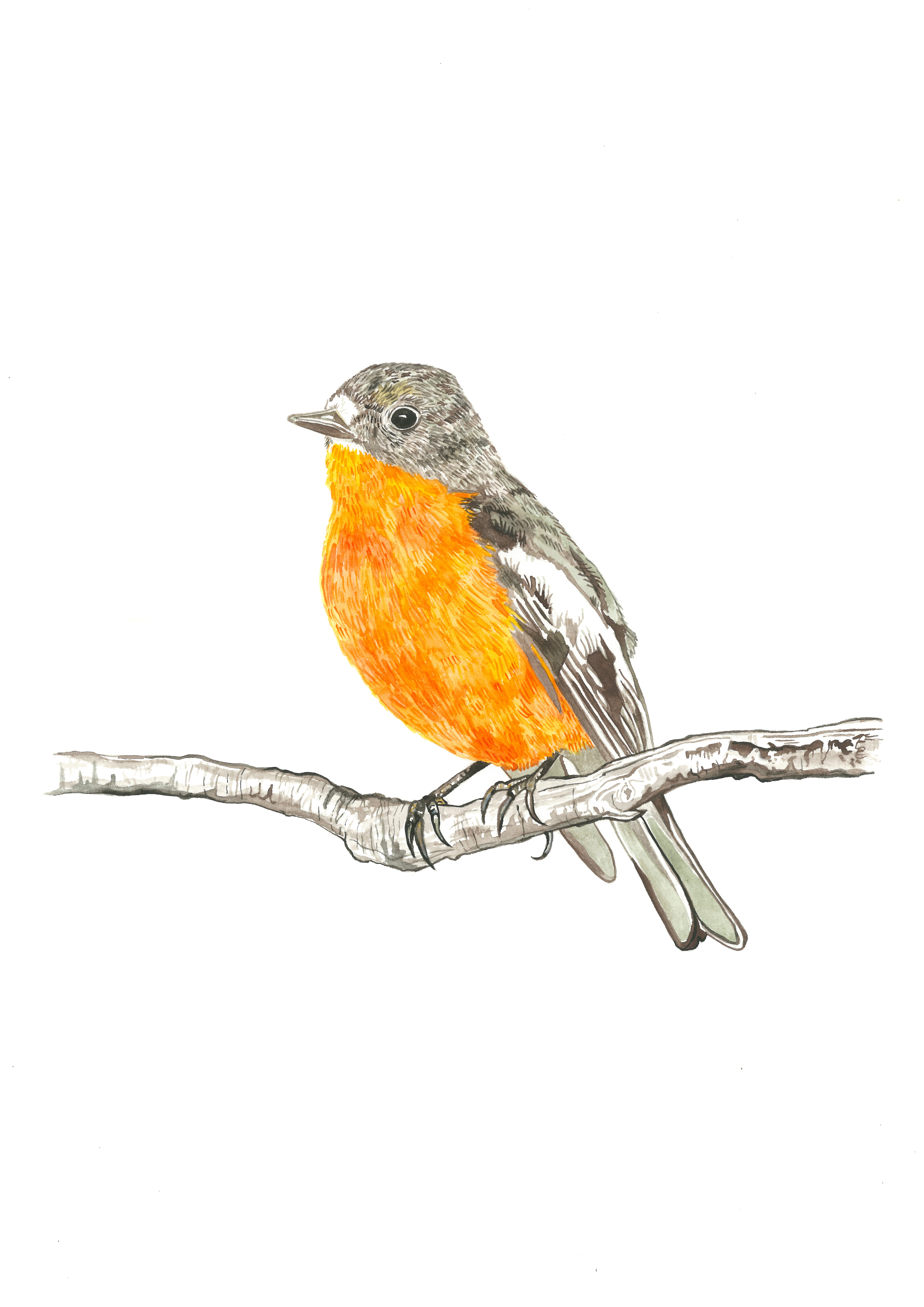Migrants on the wing
April 2021
Damon Oliver – Department of Planning, Industry and Environment
If you spend some time outside here on the Southern Tablelands, in your backyards, farms or local bushland, you may have noticed flocks of small birds on the move during the change in season.
Most noticeable are large flocks of small honeyeaters, like the yellow-faced honeyeater, that dart around between trees and patches of woodland and forest in search of flowers and insects while on their steady northward migration to chase the sun and food. Smaller birds like silvereyes and bee-eaters follow a similar migration pattern from south to north in autumn, returning to our part of the world in spring to breed.
Many other native bird species have the same well-defined seasonal migration pattern, but their departures and arrivals locally are often less obvious because they do not occur in large flocks like the honeyeaters and silvereyes. Species like whistlers, flycatchers, dollarbirds, orioles and cuckoos, to name a few, come and go in the same north-south migration pattern as the seasons change. Many of these birds arrive in spring and stay around until autumn and breed here when the conditions are fine and food resources are plentiful. But as the temperature drops so do many important food sources like nectar and invertebrates, so it makes sense for some species to chase these resources further north where it is warmer.
Even though we farewell a large suite of birds in autumn, we are treated to an influx of other species, like our dear friend the scarlet robin, that can be described as ‘altitudinal’ migrants. The scarlet robin and its equally beautiful relative the flame robin spend the warmer seasons feeding and breeding in the higher altitude forests and woodlands along the Great Dividing Range and other mountain systems.
Scarlet and flame robins typically arrive on the lower parts of the Southern Tablelands and ACT in early March. General observations have recorded the arrival of the first red robins occurring later than normal this year. Robin numbers have also been down in the last two years, possibly as a result of the devastating drought and bushfires of 2019-20 when significant areas of their habitat were temporarily destroyed. This further strengthens the importance of the Save Our Scarlet Robin project to help these and other fire-affected birds.

Images: scarlet robin and flame robin.
Small migratory birds like the robins need enough native vegetation, ground litter and fallen timber in the landscape to allow them safe passage from predators. This is where the Save out Scarlet Robin project comes in. Many local farmers are interested in having beautiful native birds like the scarlet robin on their farms – they bring a lot of joy when you see them in the morning perched on a farm fence waiting to pounce on an unsuspecting insect!
By planting more trees and shrubs on farm and managing remnant patches for conservation (still allowing grazing of livestock), the robins and other threatened woodland birds will have more habitat and landscape connectivity to move around safely while they are living locally during our colder months and during their seasonal migration.
Having more trees and shrubs, fallen timber and leaf litter will provide extra food and shelter to keep these special birds alive, as they are unfortunately listed as threatened by the NSW government.
Call the Braidwood office of South East Local Land Services (1300 799 295) for further information about the Save Our Scarlet Robin project and designing parts of your farm for bird conservation.
